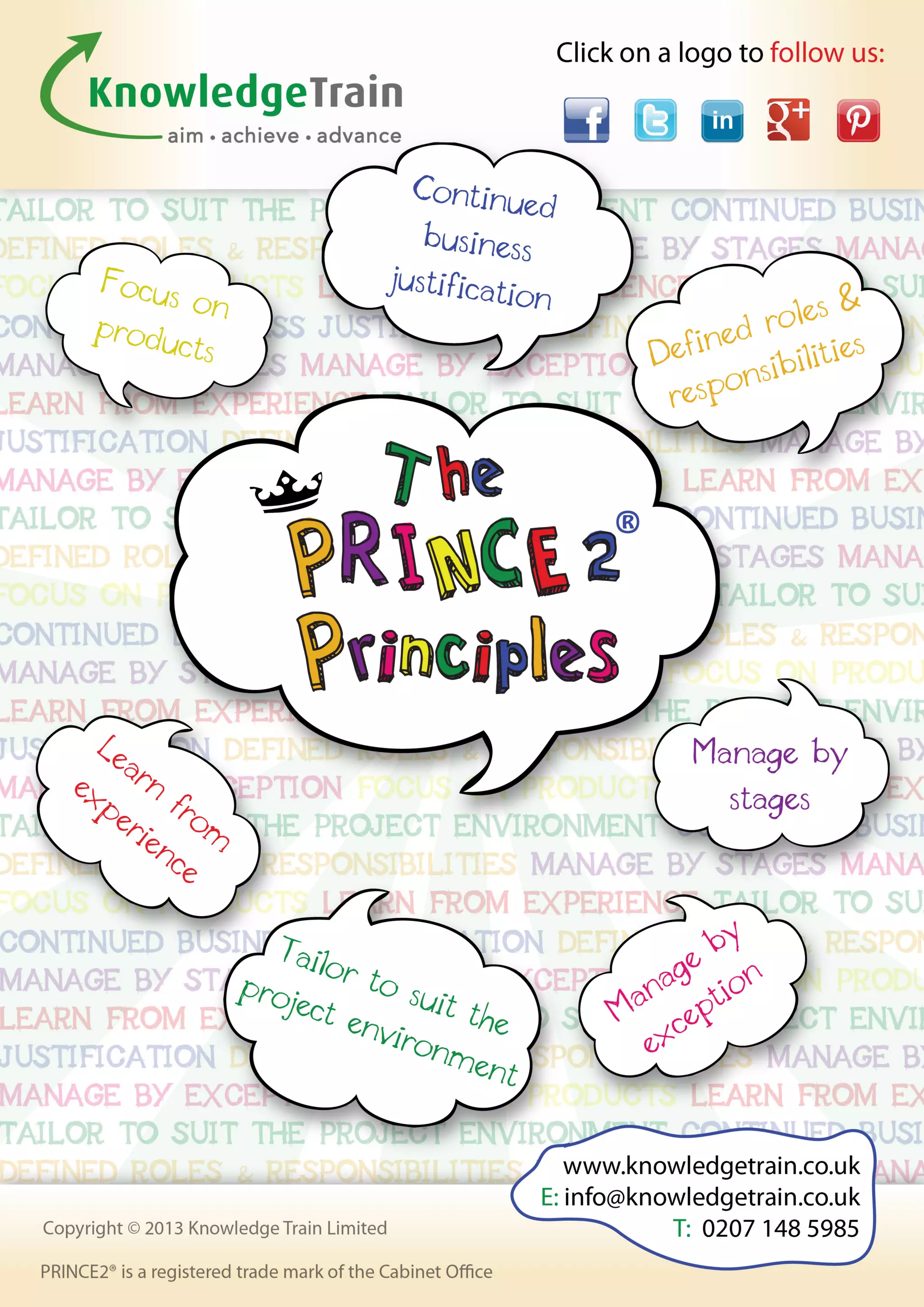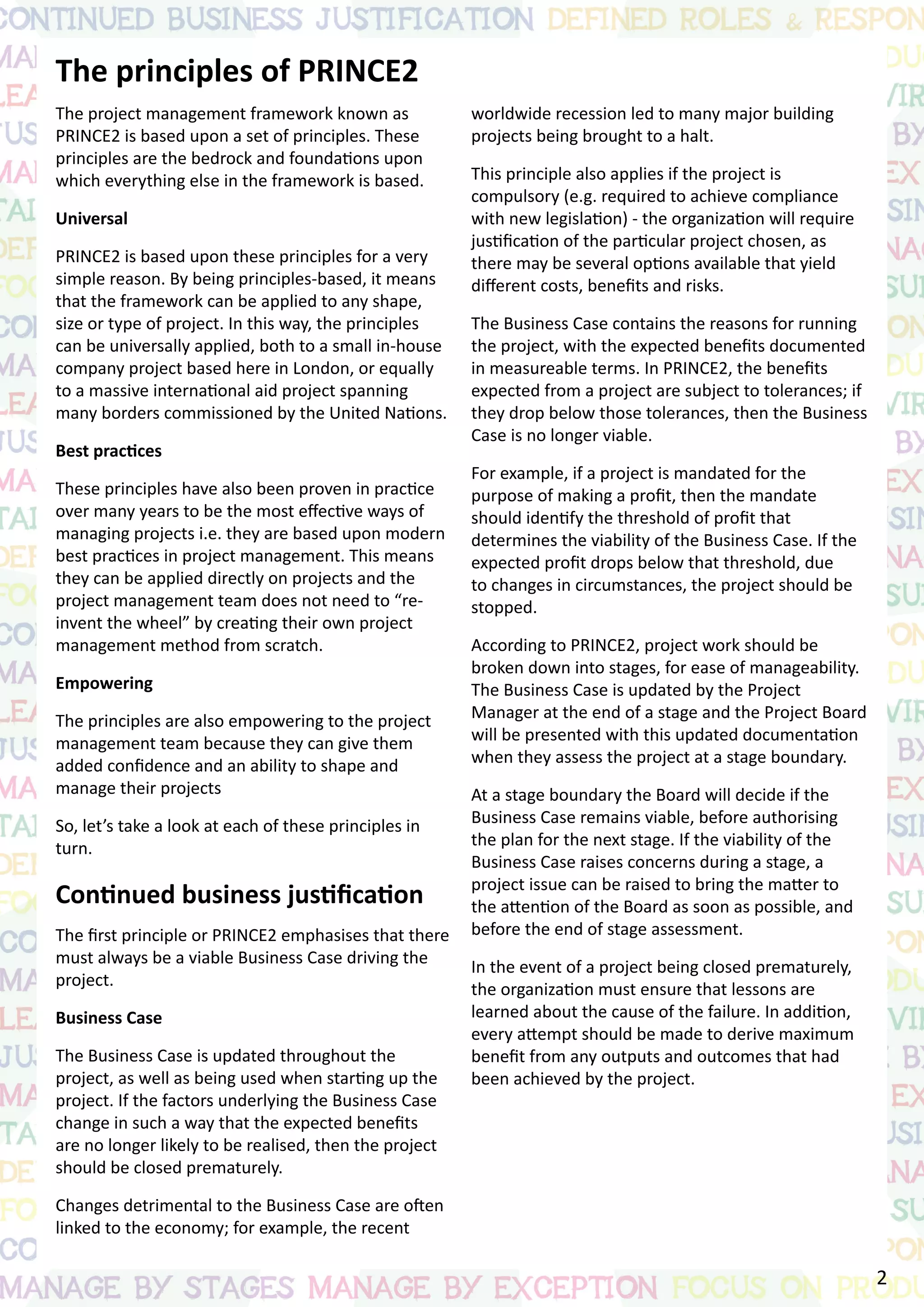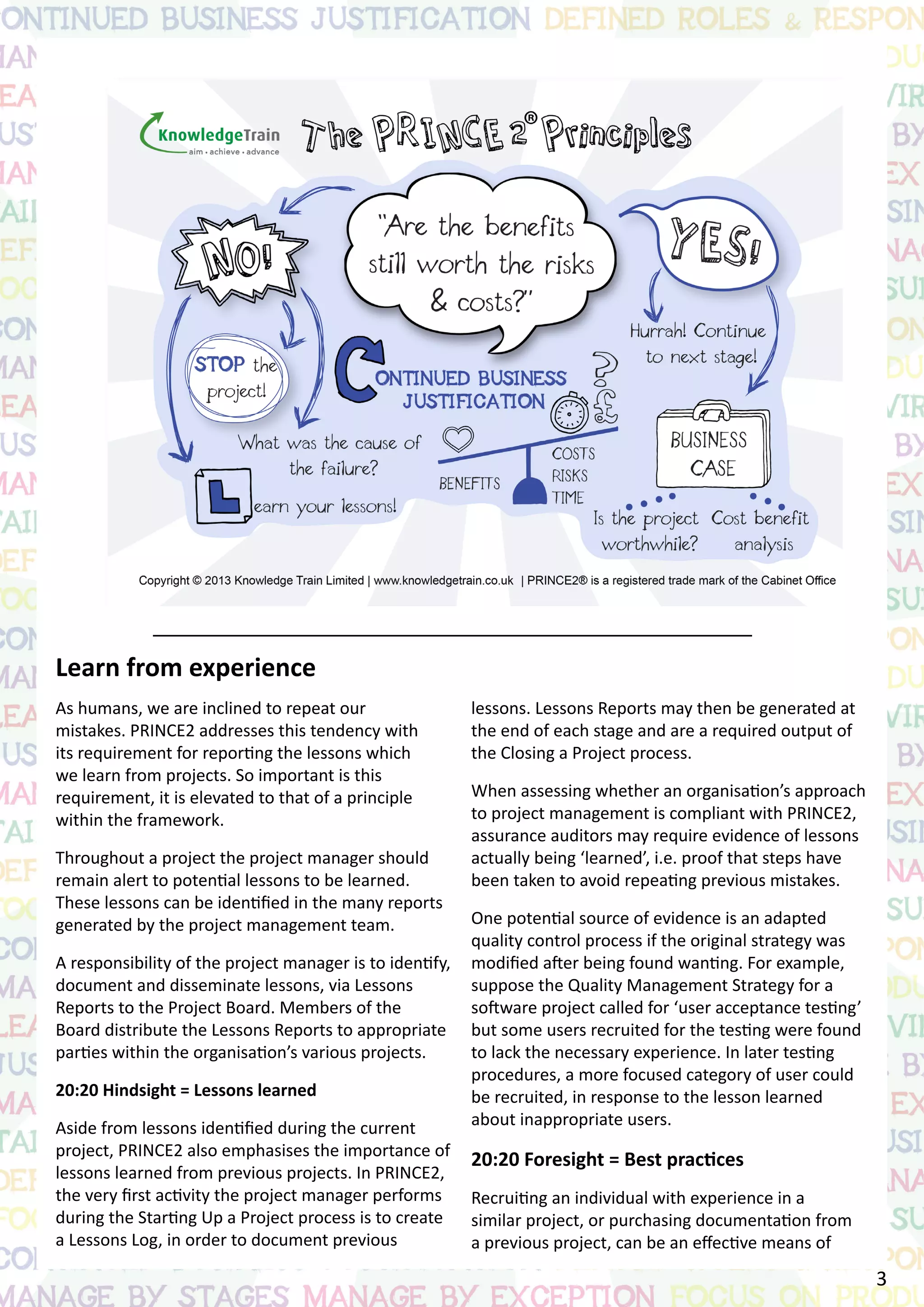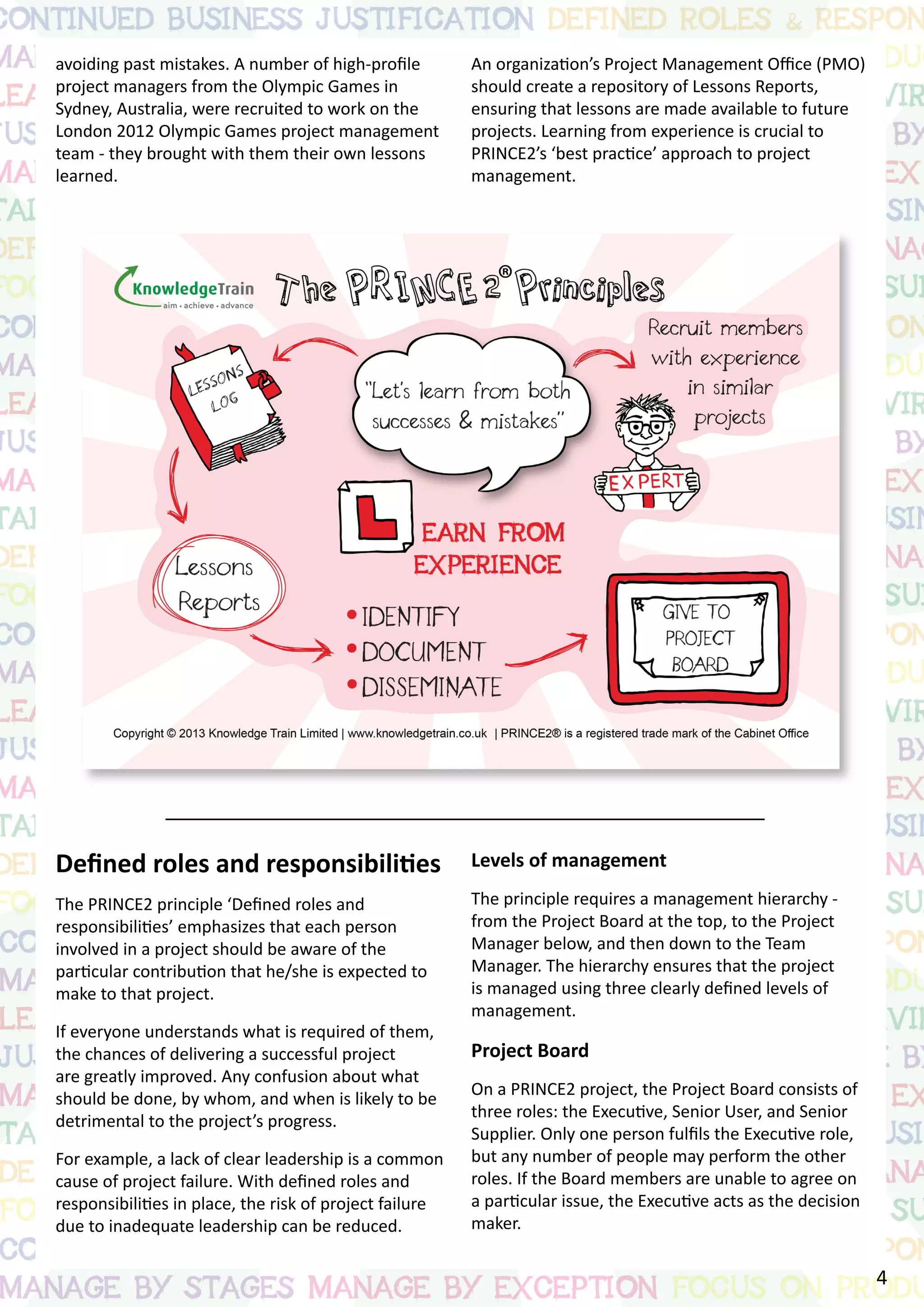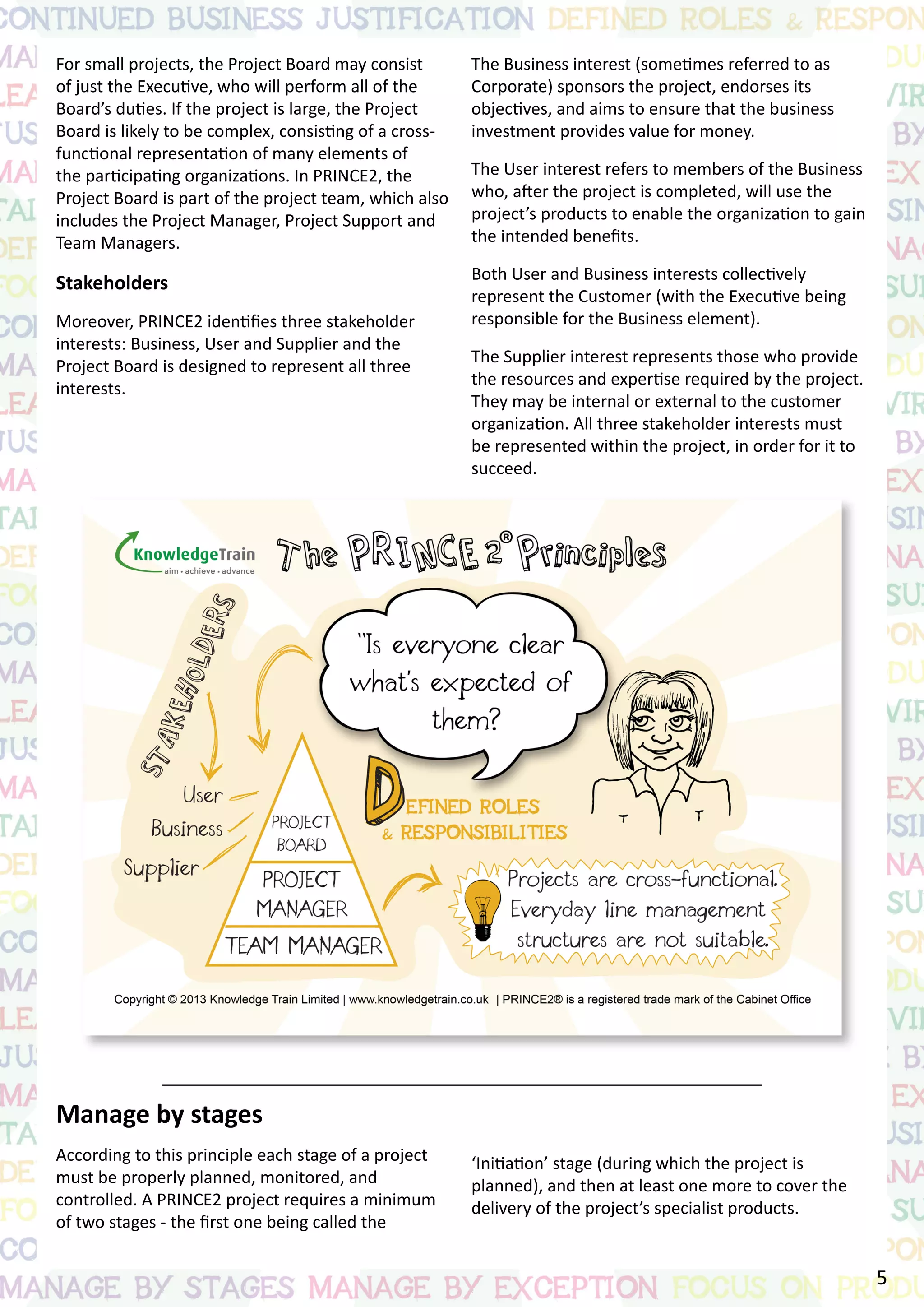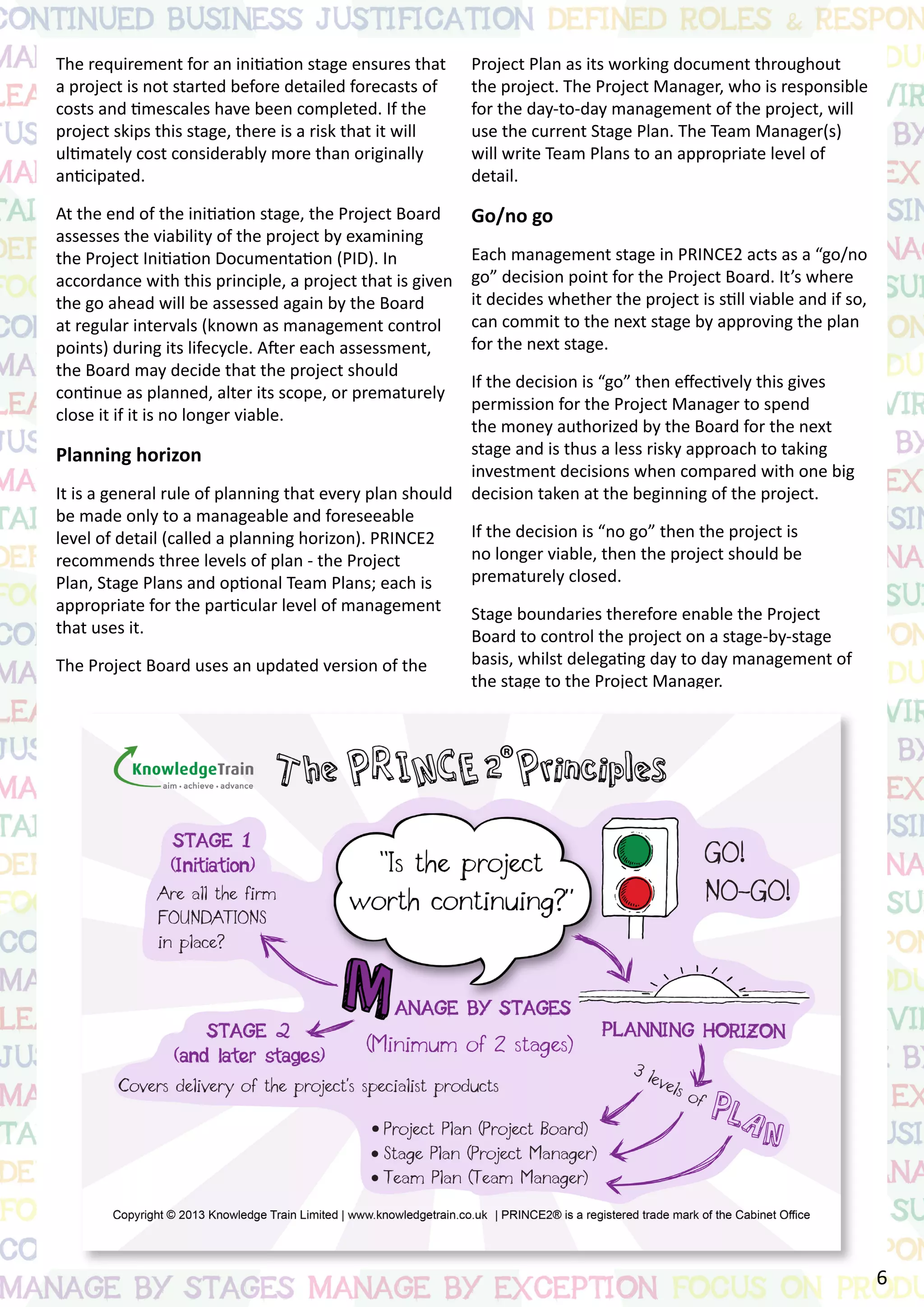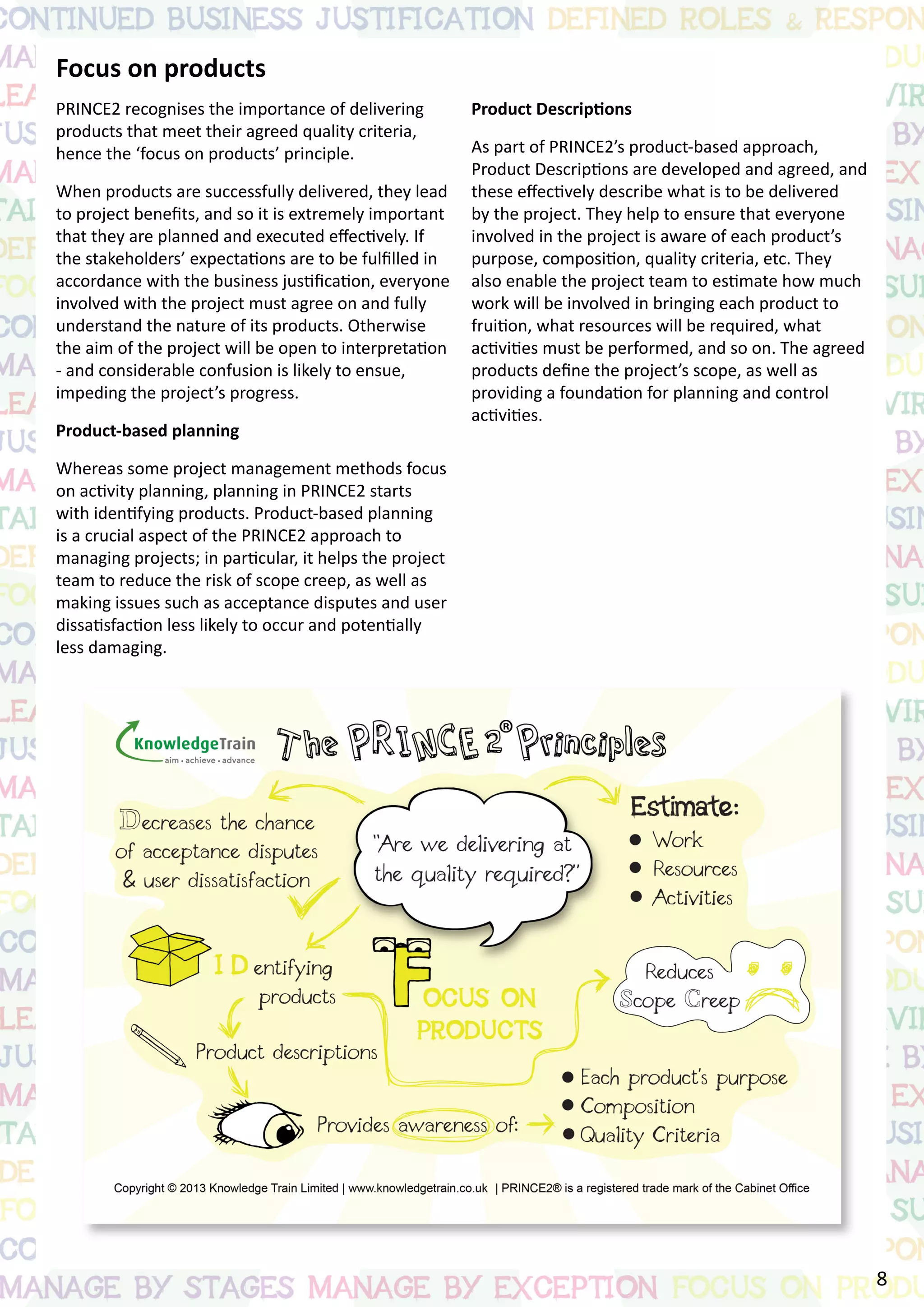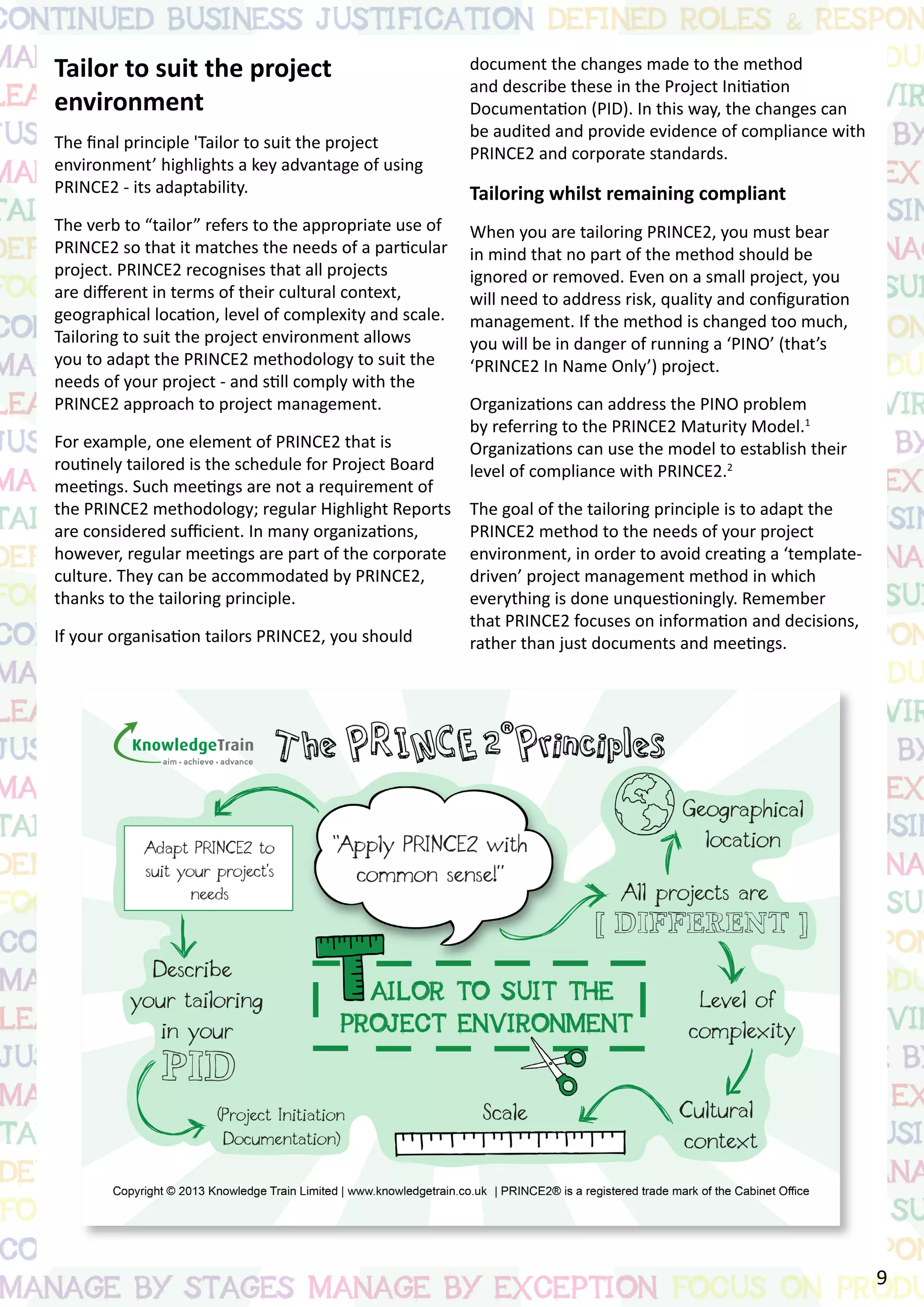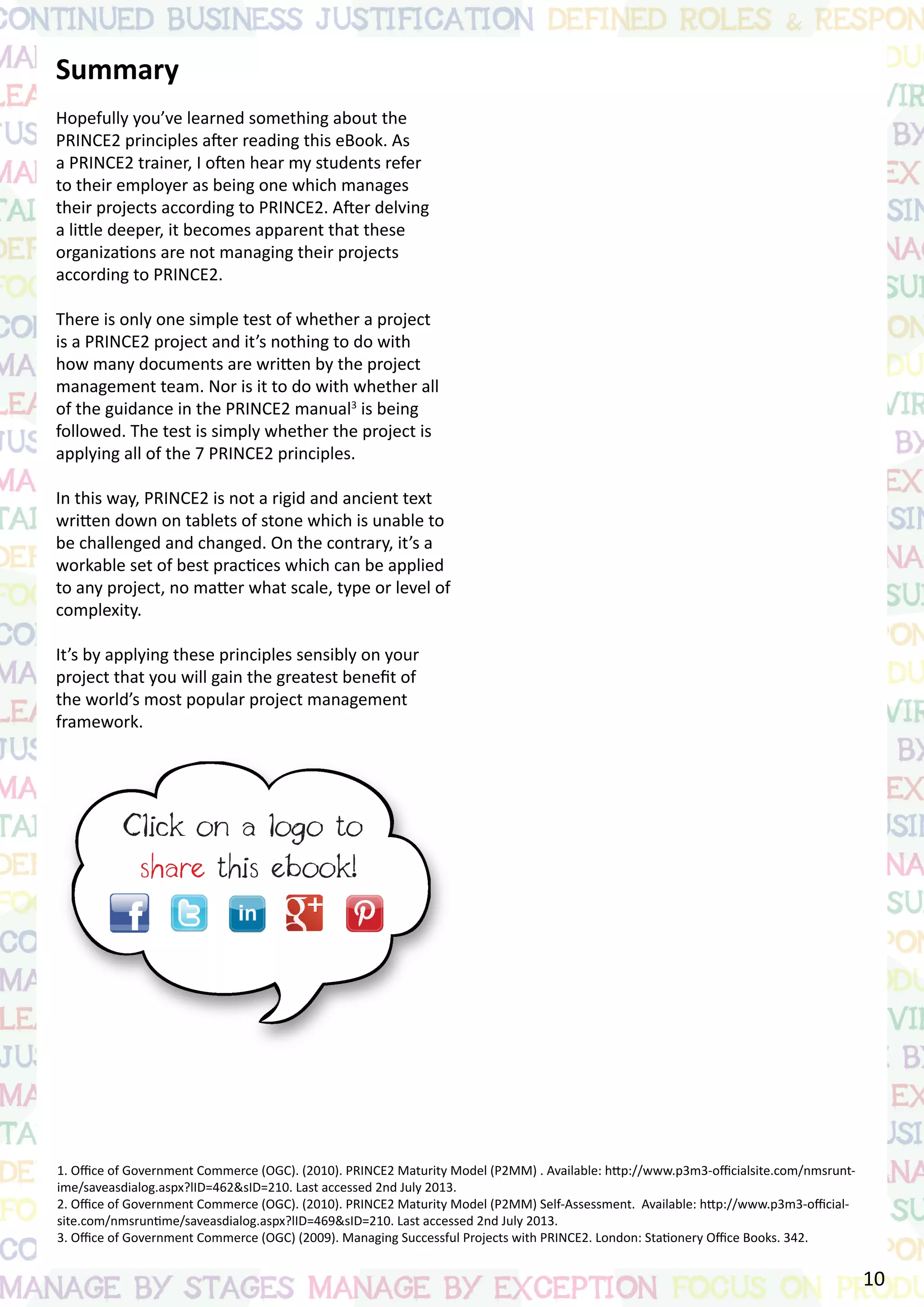The document outlines the principles of the PRINCE2 project management framework, emphasizing its adaptability to various projects regardless of their size or complexity. Key principles include the importance of a viable business case, learning from experience, defined roles, and managing by stages and exceptions. The framework advocates for a product focus and the tailoring of methodologies to best fit project environments, ensuring a structured yet flexible approach to project management.
